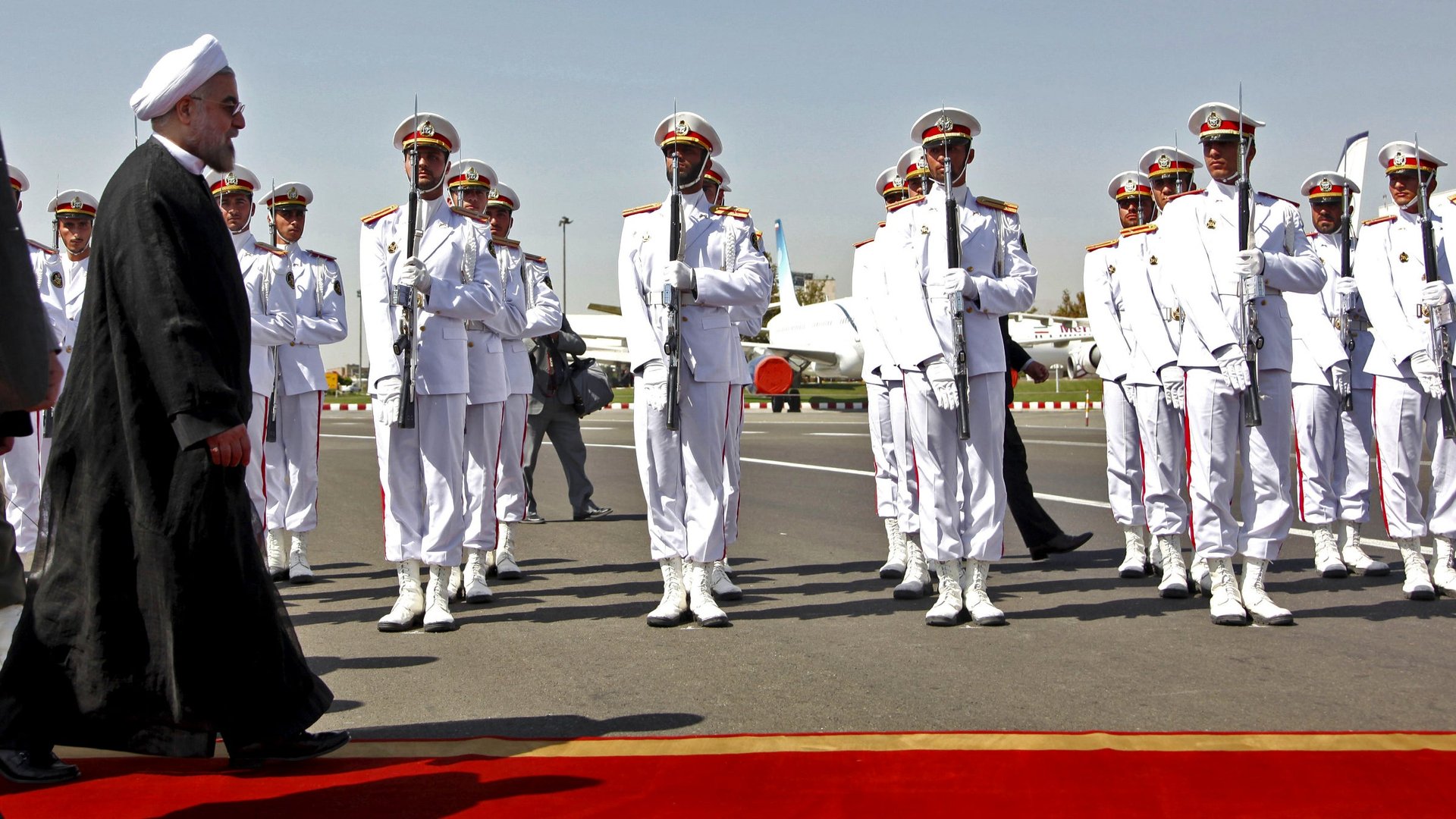Why nobody knows anything about that mysterious American plane in Iran
There’s a puzzle in international aviation and diplomatic circles: How did an American jet wind up landing in Iran?


There’s a puzzle in international aviation and diplomatic circles: How did an American jet wind up landing in Iran?
A New York Times correspondent snapped a picture of plane N604EP in Tehran Airport, and that’s where the questions started: US companies can’t do business in Iran, and you can’t bring an American-made and registered plane there without specific approval from the government. (Technically, flying a plane to another country could be considered exporting it.) But so far, the officials in charge of enforcing these rules have not commented on the plane’s presence there or whether they are investigating it. Nor has Iran’s diplomatic mission to the United Nations. Update: Iran’s foreign ministry (Persian) now says the plane is owned by Ghana and was ferrying senior government officials to a meeting; the Wall Street Journal reports the plane is owned by a mining company run by the younger brother of Ghana’s president.
Conspiracy theories abound, however: A secret diplomatic mission? (Not likely to be so obvious, experts say.) One might assume the same about smugglers evading trade sanctions. Here’s another possibility: Maybe it’s simply a wealthy tourist.
One reason we know so little is the opacity of the plane’s ownership: While all US planes must be registered in the Federal Aviation Administration’s database, they are often not registered to their real owners. Some news outlets have written, erroneously, that the Bank of Utah “owns” the plane—and the Times quotes an official at the bank saying he had “no idea” why it was in Iran. In fact, the Bank of Utah is the trustee of the plane, managing it for investors that it has not yet revealed—and may not even know. It’s similar to the way that shell companies are managed by nominee directors on behalf of a hidden beneficial owner.
This is a common way to own an aircraft. According to the FAA, the Bank of Utah is the trustee for more than 1,169 aircraft; the Bank of New York is the trustee for five 727s; Delaware firms such as Aircraft Trust and Finance (56 planes) and Corporate Services Corporation (93 planes) do the same. Why? It helps protect the privacy of the kinds of people—celebrities and plutocrats—who can afford to travel by private jet. It’s also a simple way to get around a US law forbidding foreign-registered airplanes from flying within the US (Lufthansa can drop you off at JFK International Airport in New York, but it can’t take you from there to Cleveland).
That means foreign owners of private planes need a US trust so that they can register and fly their plane within the US, so the plane in Tehran could actually owned by a non-US citizen or entity. That doesn’t necessarily indicate there’s no violation of US sanctions—a foreign person couldn’t just buy a plane in the US and sell it in Iran, for example—but it does suggest a possible explanation for why it flew there.
The only organization that has publicly said it is investigating the situation is the Bank of Utah, where an executive told the Times that the bank will resign its trusteeship of the plane if there are signs of illegal activity.